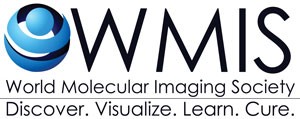The fields of biomedical nanotechnology and theranostics have enjoyed exponential growth in recent years. The Molecular Imaging in Nanotechnology and Theranostics (MINT) Interest Group of the World Molecular Imaging Society (WMIS) was created in order to provide a more organized and focused forum on these topics within the WMIS and at the World Molecular Imaging Conference (WMIC).
Nanoparticles are extensively used for diagnostic and therapeutic purposes. Many promising nanoparticle-based imaging technologies have been reported in recent years. Nanoparticles are particularly useful as they offer a wealth of features, complementary to small-molecule agents. For example, nanoparticles can serve as multimodal imaging agents, enabling detection of disease with multiple methods, such as optical imaging, photoacoustic imaging, PET, or MRI. Theranostic tools can be developed, based on nanoparticles that possess capabilities for specific diagnostic imaging, and effective treatment, combined in a single agent. Given the complexity in properties of nanoparticles and their many applications, it is important, and challenging, to come to a consensus on standards, data sharing and reproducibility of these materials. This educational module by WMIS shares differing experiences in molecular imaging to provide support to the community in meeting these challenges.
Molecular Imaging in Nanotechnology and Theranostics
Featuring:
Featuring: Jason S. Lewis, PhD, Professor and Emily Tow Jackson Chair in Oncology, Memorial Sloan Kettering Cancer Center, New York, NY, USA
Michelle Bradbury, MD, PhD, Director, Center for Translation of Cancer Nanomedicines & Intraoperative Imaging Program, Professor of Radiology, Sloan Kettering Institute, New York, NY, USA
Jan Grimm, MD, PhD, Associate Member, Professor & Radiologist, Memorial Sloan Kettering Cancer Center, New York, NY, USA
Chrysafis Andreou, PhD, Research Scholar, Kircher Lab, Memorial Sloan Kettering Cancer Center, New York, NY, USA
Moritz Kircher, MD, PhD, Associate Vice Chair for Research, Department of Radiology, Member, Center for Molecular Imaging & Nanotechnology, Memorial Sloan Kettering Cancer Center, New York, NY, USA
Article:
Molecular Imaging in Nanotechnology and Theranostics
Chrysafis Andreou et al, Molecular Imaging and Biology (2017) 19:363-372
Image-Guided (Precision) Nanomedicine
Twan Lammers, Department of Nanomedicine and Theranostics, RWTH Aachen, Department of Targeted Therapies, University of Twente, Department of Pharmaceutics, Utrecht University, The Netherlands.
This presentation describes nanomedicine and emphasizes imaging’s role in stratifying patients, and in what situations we can use nanomaterials for real clinical translation and better patient benefits. Theranostic nanoparticles combine diagnostic and therapeutic properties within a single formulation. Such agents are highly useful for image-guided drug delivery, which can be employed to individualize and improve interventions, in particular in the case of cancer. By preselecting patients presenting with sufficiently high levels of enhanced permeability retention (EPR), and by excluding those presenting with no or very low EPR-mediated target site accumulation, responders can likely be discriminated from non-responders, thereby providing a theranostic means to personalize nanomedicine treatments.
